
This summer, I sat in a massive pitch-black room and muttered “Holy shit. Holy shit. Holy shit. Holy shit…” over and over again. I couldn’t stop repeating “Holy shit” for maybe for five minutes. I’d been anticipating this moment for nearly a year. I was somewhere underneath New York City. I was waiting to be shown The Underbelly Project. Technically, I was there to take photos, but really I didn’t care at all if images came out or not. Really, I just wanted to see firsthand what was going on 4-stories below the streets of New York City.
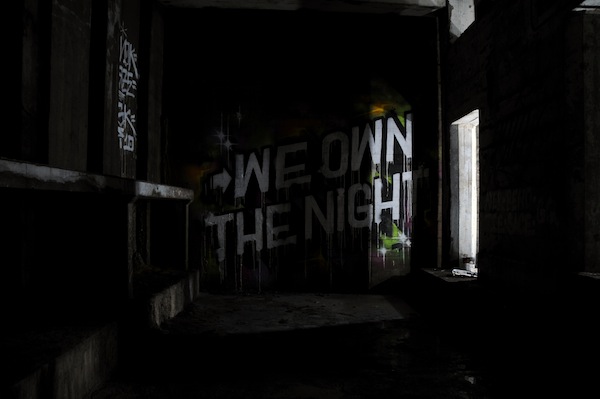
Imagine Cans Festival, FAME Festival or Primary Flight: Some of street art and graffiti’s best artists all painting one spot. That’s kind of like The Underbelly Project. Except that The Underbelly Project took place in complete secrecy, in a mysterious location and without any authorization. Over the past year, The Underbelly Project has brought more than 100 artists to an abandoned and half-finished New York City subway station. Each artist was given one night to paint something.

Workhorse and PAC, the project’s organizers, have put countless hours into their ghost subway station, and now they’re finally ready to unveil it to the world, sort of (more on that later). So I guess that’s why I was in that dark room, sitting in silence, waiting for them to give me a flashlight. I’m still not sure why I’d been extended the invitation to see the station firsthand, but I couldn’t be more grateful for the opportunity. The Underbelly Project is going to be part of street art history.
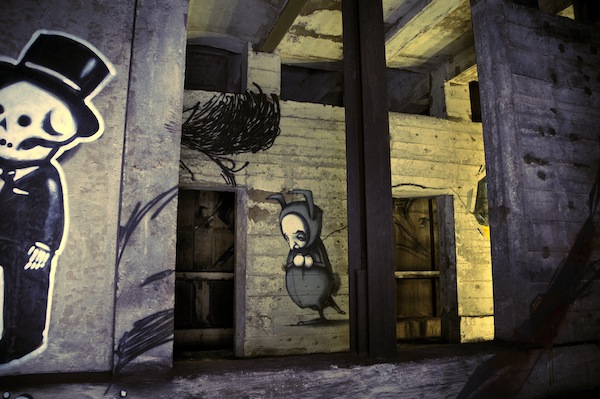
Eventually, Workhorse and PAC came over to where I was sitting and lent me a flashlight. I stood up, already coated in dust and probably dirtier than I’ve ever been, and got a full tour of the station. I’m not somebody who is good at estimating the size of a space, but The Underbelly Project took place in a space that was meant to be a subway station, so I guess it was the size of a subway station with a few tracks. The station is like a concrete cavern: random holes who-knows how deep into the ground, dust thick like a layer of dirt, leaky ceilings and hidden rooms. Except the whole station is covered in art. Think of FAME Festival’s abandoned monastery transplanted to beneath New York City. I’m not an urban explorer, so I had no idea that there are abandoned subway stations throughout New York, but The Underbelly Project seems like just about the best possible use of one.
Of course, having been down there myself, I’m going to be prone to hyperbole. Even at it’s simplest, even if The Underbelly Project is “just another mural project,” it’s a story that the artists can tell for years, and it may even be evidence that street art isn’t so far gone and corporate as some people have suggested.
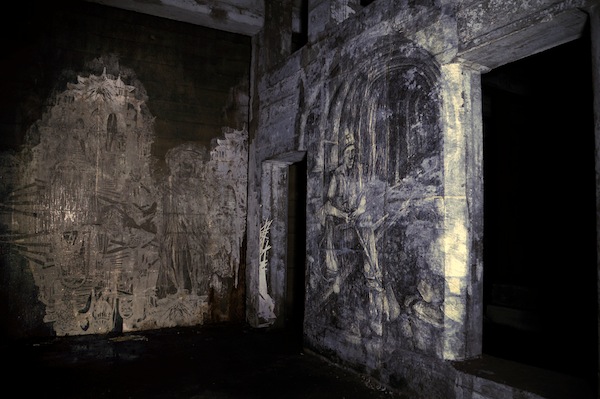
The list of artists who painted for The Underbelly Project goes on and on, but here are just a few:
Swoon
Gaia
Know Hope
Revok
Roa
Dan Witz
Jeff Soto
Faile
Mark Jenkins
Elbow-toe
TrustoCorp
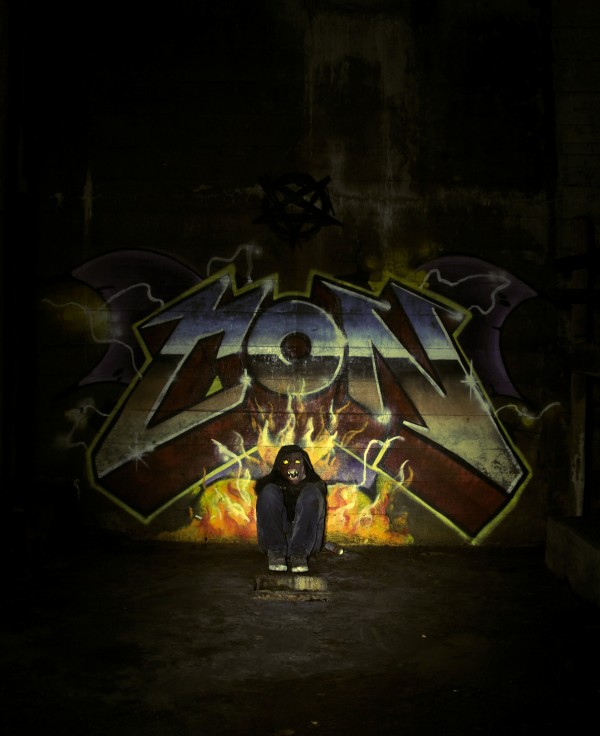
On my visit, The Underbelly Project wasn’t finished. In fact, somebody was painting there that night. Nonetheless, the space was already substantially painted and postered. I spent that night wandering around the tunnels, taking photos and getting lost (and also scared – Damn you Mark Jenkins! You can’t put a sculpture like that at the end of a darkened hall. I thought it was a person!).
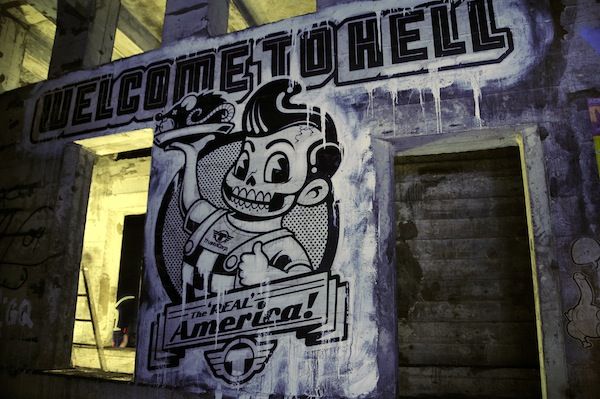
And what now? The walls have all been painted and the artists have moved on to new projects. When the last artist finished painting the last wall, Workhorse and PAC made access to The Underbelly Project nearly impossible by removing the entrance. Even if any of us wanted to go back (and I do), even if we could remember how to get there (and I don’t), we can’t. Nobody can. For now, The Underbelly Project has become a time capsule of street art, somewhere in the depths of New York City.

Brad Downey once explained to me why he thought Damien Hirst’s diamond skull is interesting. It had something to do with what people would think of the skull in 1000 years, when its original meaning has been lost to time. That’s when the skull is going to become a true icon and object with immense power. In some ways, The Underbelly Project is like Hirst’s skull, without the price tag. One day, decades from now hopefully, somebody may rediscover that old subway station and have no idea what they’re looking at. Hopefully, they’ll just feel that it’s something incredibly special.
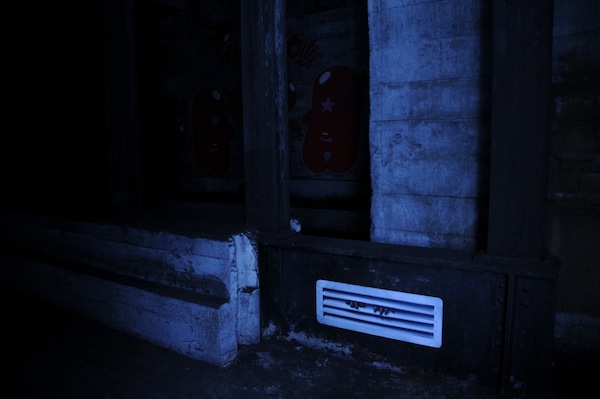
Here are some more images from The Underbelly Project, and expect more over the coming days on Vandalog and around the blogosphere… Or you can pay £1 to read an in-depth article about it in today’s Sunday Times.
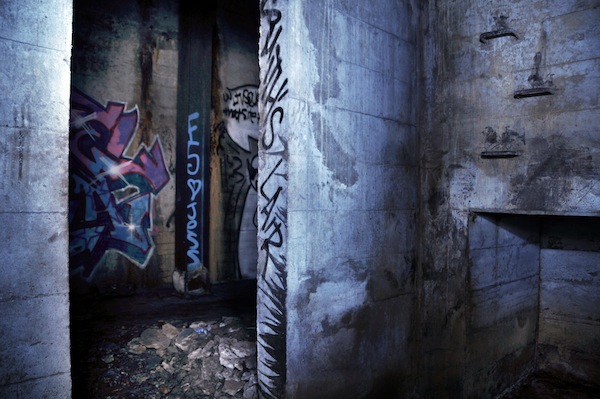
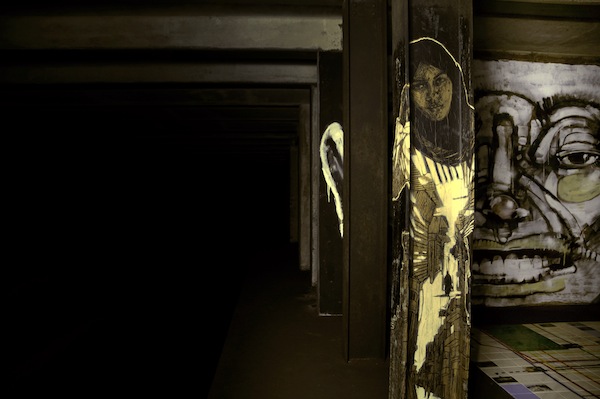

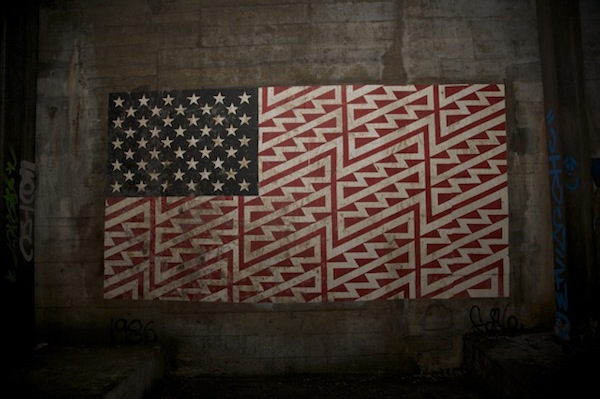
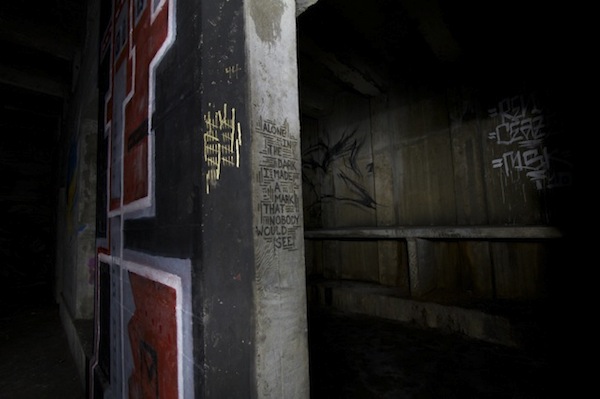
Photos by RJ Rushmore, Workhorse and PAC
